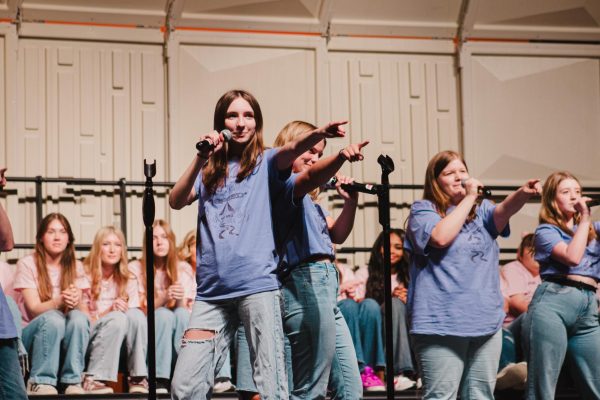Unsocial Butterflies: A look at how teens react to neurological social disorders
A laugh that’s a little too long. A whisper that’s a little too loud. A comment that’s a little too blunt.
These seemingly harmless mannerisms can lead to ostracism, especially in high school, where insecure teenagers jump at the opportunity to criticize others’ subtle deviations from the norm in an effort to artificially inflate their own self-esteem.
A discrepancy exists between how physically disabled people are treated compared to those with neurological disabilities.
When someone has Down’s Syndrome or a physical deformity, people treat him or her with the apparent disability in mind.
Neurological social disorders are harder to spot in a crowd. Those with neurological social disorders are easier to disregard because they look “normal”; therefore, people assume they must be to some extent.
Few people entertain the idea that the kid next to them in biology may be suffering from a neurological disorder when he or she responds to the obligatory greeting of, “Hi, how are you?” with a long oration of personal problems.
As a result, those who commit uncommon social faux pas become the prime target for bullying. The National Autistic Society reports that 60 percent of children with Asperger’s syndrome have experienced bullying. In contrast, only 27.8 percent of other children have reported being bullied, according to the National Center for Educational Statistics.
“Weird” kids are often victims of bullying because they aren’t protected by the neatly labeled box of “Special Education.” With terms like “a little off” and “socially awkward” thrown around, the culture in and out of school promotes beratement of people who respond to the world differently than most of society.
Because of high schoolers’ alertness to social blunders, many are doubly aware of their actions so as to not slip up and be seen as “a little off” because of the huge stigma. Unfortunately, people with neurological social disorders are often unable to distinguish between “normal” and “socially awkward” behaviors, so efforts to avoid slip ups are often in vain.
A person with Asperger’s has as much control over his or her blunt comments as a dyslexic person has over misreading a word. Unfortunately, many individuals with disorders like Asperger’s go through life undiagnosed and ridiculed for their inability to respond to social situations in an acceptable way.
Part of the problem is that awareness of neurological social disorders is fairly new. Not too long ago, if someone deviated from socially accepted behavior, he or she was considered eccentric or an “odd duck” whose parents must have failed to teach him or her proper etiquette.
Now, even with psychology increasing its focus on neurological social disorders, a deep-seated misunderstanding regarding that sphere of disability prevails.
Many of the “weird” kids in high school may have a mild neurological social disorder. Criticizing an individual based on his or her awkward mannerisms or difficulty communicating can be likened to taunting a person in a wheelchair because he or she can’t stand.
Sometimes damage from bullying never really heals. People can be psychologically disfigured by this kind of emotional trauma. A study by Andrea C. Samson of Stanford University found that about 45 percent of people with Asperger’s have gelotophobia, the fear of being laughed at. Because of repeated ridicule in the past, these individuals do not register their peers’ smiles or laughter as positive, but as a means to make fun.
While the belief that bullying can be stopped in its entirety is idealistic and naive, students and staff can work to educate their peers about why aggressive, dismissive or exclusionary behavior toward people with disabilities is wrong.
Your donation will support the student journalists of Lawrence Free State High School. Your contribution will allow us to purchase equipment and cover our annual website hosting costs.







